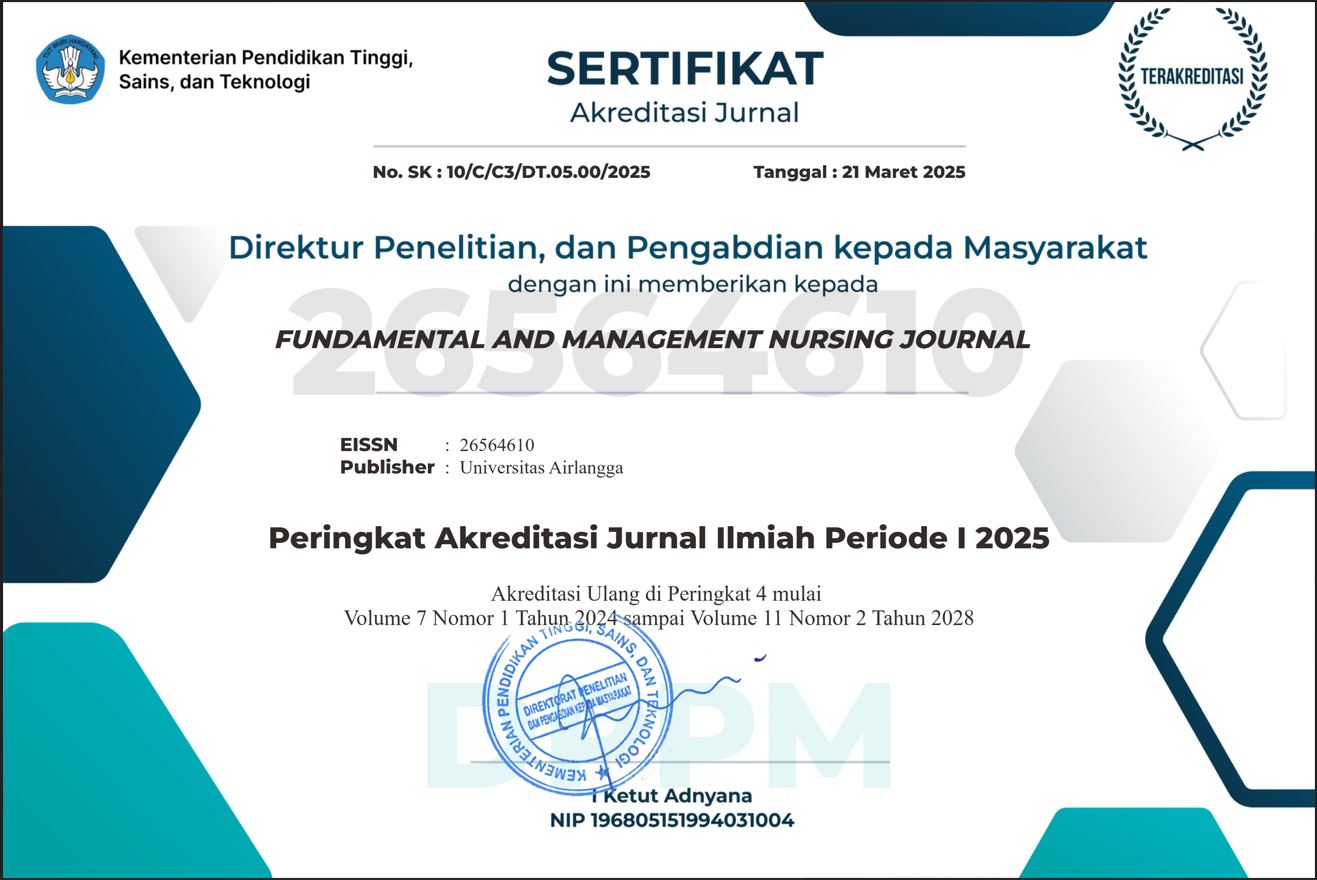Relationship between Structural Empowerment of Nurses, Managerial Experience, and Resistance to change: A Cross-sectional Study
Introduction: Nurses play an integral role in the healthcare system, representing the most essential and prominent component of the healthcare sector. To build a resilient organizational plan, it is necessary to engage employees in decision-making and offer them greater autonomy. This is usually accomplished through empowering employees, with the behavior of leaders playing an integral role, especially in empowering leadership. Thus, this study aimed to examine the relationship between structural empowerment among nurses, years of managerial experience, and resistance to change.
Method: This cross-sectional, descriptive correlational survey included 148 participants employed in formal or acting leadership roles such as nursing managers, head nurses, or nursing supervisors in a Riyadh university hospital, selected using convenience sampling. Data were collected using the CWEQ-II and RTC scales. Descriptive statistics, Pearson correlation, ANOVA, and multiple regression were used to analyze the data.
Results: The results indicated that structural empowerment among nurses is significantly and negatively associated with resistance to change, indicating that an increase in structural empowerment leads to a decrease in resistance to change. However, years of managerial experience showed no significant association with resistance to change, demonstrating that having more or fewer years of managerial experience did not meaningfully impact resistance levels.
Conclusion: This study concluded that with more employment empowerment, exposure, and accessibility to information, resistance to change can be reduced.
1. INTRODUCTION
Nurses play an integral role in the healthcare system, representing the most essential and prominent component of the healthcare sector. As per the(Organization, 2024), there are around 29 million nurses globally, and the healthcare sector is projected to face a shortage of 4.5 million nurses by the end of 2030. The profession of nursing demands specialized care and is at risk of exposing staffing deficiencies. To achieve the target of Saudi Vision 2023, the health transformation strategy predicts that over 100,000 nursing positions will be required by 2030(Al-Otaibi et al., 2024). Nonetheless, it is still uncertain whether nurses will continue working in the healthcare facilities in Saudi Arabia, given the higher turnover rate for nursing compared to other nations. As compared to the United Kingdom, Saudi Arabia has a 20% higher turnover rate than the United Kingdom.(Liu et al., 2023)examined the determinants influencing the turnover intentions of nurses and found that turnover intention among nurses was significantly associated with being single, having an education level of junior college or below, working as a clinical nurse, income level, reporting greater job satisfaction, and experiencing conflicts with colleagues.
Central to nursing practice is the concept of caring, which extends beyond patient care to the way leadership is exercised in clinical environments. Caring leaders can enhance the commitment to the organization, lower stress levels associated with work, and increase productivity(Kostich et al., 2021)(Salinas et al., 2020). Theoretical models such as Eriksson's Caritative Theory and Watson's Caring Theory clarify that when a leader demonstrates caring for staff, this builds trust, compassion, and strong relationships(Bergbom et al., 2022)(Zhang et al., 2022). There are important influences of leadership when discussing organizational climate within nursing management and the potential impacts of this leadership on the responses of staff to change. While caring leadership is significant, the present study is connecting primarily to structural and organizational conditions that would allow nurses to appropriately and constructively respond to change.
Change within healthcare is an inevitable and multidimensional process, deeply intertwined with the foundation of nursing practice. As healthcare systems evolve, nurses must be intellectually and practically equipped to adapt to these transformations(Cheraghi et al., 2023). These changes are necessary for growth and development, but they often encounter resistance from employees. Resistance to change is a perilous impediment that usually causes failure in change efforts(Szabla, 2007). However,(Ford & Ford, 2010)argued that the conventional approaches overlook the significant influence of change agents in the process and ignore the concept that employees' resistance to change could be based on valid concerns. Poor management of the change process by these agents, especially managers, has been identified as a major reason for unsuccessful change efforts(Fernandez & Rainey, 2017). Managerial experience is an important factor in how staff view and respond to change. Experienced managers are more likely to successfully manage change processes, anticipate possible barriers, build trust with staff, and apply strategies that are appropriate for minimizing resistance to change efforts. In contrast, managers with less experience may lack the confidence or have less capacity to mitigate resistance, which may yield larger opposition. As(Assaf & Cvelbar, 2011)observed, managers who have been with an organization for many years can make good decisions by drawing on their deep awareness and knowledge of the organization. However, Assaf and Cvelbar also highlight the potential for cognitive rigidity associated with tenured leaders, as reliance on habitual behaviours can inhibit decision-making and negatively impact change management. This dual perspective is supported in the change management literature, which emphasizes the importance of experienced leaders in fostering acceptance of change and implementing it successfully(Furst & Cable, 2008)(Oreg, 2003)(Vos & Rupert, 2018)(Dam et al., 2008).
To build a resilient organizational plan, it is essential to engage employees in the process of decision-making and offer them greater autonomy(Arnold et al., 2000). This is usually accomplished through empowering employees(Spreitzer, 1995), with the behavior of leaders playing an integral role, especially empowering leadership(Druskat & Wheeler, 2003). Building on this perspective, this study defines structural conditions for management practice according to Kanter's theory of structural empowerment(Kanter, 1993)(Spence Laschinger et al., 2001). Structural empowerment, a term commonly discussed in the context of nursing, is linked with effective management of these negative influences by focusing on social systems that facilitate the work of an employee. Kanter's theory identifies contextual factors in organizations that support a healthy work environment and enhance employee commitment processes to improve organizational effectiveness. It also posits that access to empowering structures shapes work attitudes and behaviors more than personal characteristics or abilities. These structures include access to resources (e.g., materials, personnel, and time), relevant and updated information, opportunities for learning and career development, and support from superiors, colleagues, and subordinates. These four dimensions formed the theoretical basis for selecting the variables in this study. The relationship between structural power and employee empowerment has been documented in nursing research(Kanter, 1993)(Kluska et al., 2004)(Siu et al., 2005). Kanter's theoretical framework posits that empowerment is derived from the context, provided that the work environment offers the employee consistency of access to the empowerment structures.(Hezaveh et al., 2020)emphasized that the professional efficacy of nurses is enhanced as their resilience increases after being empowered. They can
Copyright (c) 2025 Omar Ghazi Baker

This work is licensed under a Creative Commons Attribution 4.0 International License.
1. The journal allows the author to hold the copyright of the article without restrictions.
2. The journal allows the author(s) to retain publishing rights without restrictions.
3. The legal formal aspect of journal publication accessibility refers to Creative Commons Attribution (CC BY).
















